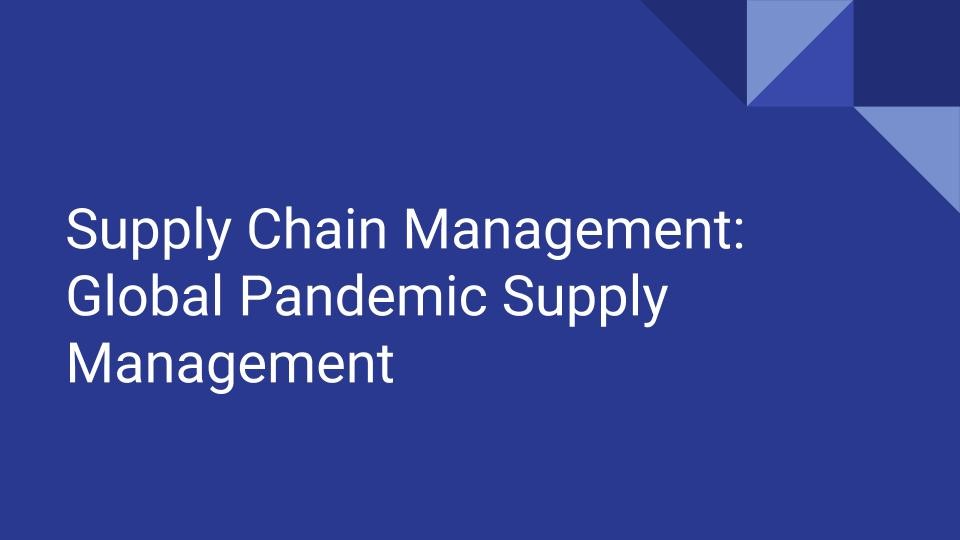
Every year identifies a critical business operational focus that must be made more robust. For 2020, that focus is manufacturing supply chain optimization. The impact of the current global pandemic, is one that has affected all aspects of our existence. While some sectors in the healthcare realm thrived, there are aspects of the manufacturing sector that have actually been significantly affected by the lockdown activities. The industry’s response to the pandemic, is the incorporation of newer more robust systems that will enable the utilization of advanced technology, in order to optimize the supply chain.
The pandemic teaches us that we are a global system, and highlights that health is really the baseline of wealth. At this stage of the pandemic, health and government officials have taken the time to actually contain the pandemic as best as possible. With the reduction in human activity, global supply chains have been affected. From various news casts, you may have observed that material shortages affected the production of critical food and drugs that would have aided in the treatment of the ailing. Some aspects of the supply chain were affected as vendors and suppliers operational chains were affected due to demand changes.
From an engineering perspective, there are currently opportunities that are emerging from the changes in the supply chain. Studies have shown that many of the organizations affected by the pandemic, were without a clear view of their entire supply chain. As a result, they could not predict that there would be a shortfall in their supply as the pandemic emerged.
As organizations realize that it is important to have improvement in their system robustness, the means to achieve this objective would be via solutions that are effective and scalable. The best organizations are agile and adapt best practices in their operational strategies. Best practices that will enable supply chain management during a pandemic include:
-
Understand the ROI of Supply Chain Expenditure
With multiple vendors, supply chain systems can become quite complex in nature. By taking the time to identify the impact of each expense on the supply chain, and tie it to the revenue stream, an organization can identify the areas that are critical and the areas where resources can be diverted. Pandemics are times of uncertainty, and ensuring that free cash flow is available via research optimization will actually enable an organization to manage its operations better. With a lean manufacturing system, financial resources can then be utilized in areas such as purchase of raw materials, or optimization supply chain IT infrastructure. With the appropriate resource allocation, the organization can stay afloat.
-
An Agile Supply Chain
An agile supply chain will keep an organization successful. The pandemic has introduced variables in an organization’s operational structure that require newer levels of thinking in order to attain. From a system perspective, having a clear understanding of system process flows, bottlenecks and their solutions can be developed. Utilize technology such as predictive algorithms in order to identify system trends that will enable production forecasts, and their manufacturing match to be activated.
-
Enable Multiple Suppliers
Redundancy is key in an organization. As organizations realize that the pandemic has affected their supply and demand, being flexible in your supplier base will be key to enabling your organization to thrive. Have contingencies in place as you embark on the journey to actually build a robust pipeline. As current pandemic restrictions affect supply chains, it will be important to ensure that you have supplier options. Utilize local options where possible, and that will enable direct access to products without having to utilize shipping methods from overseas.
-
Focus on Quality
Quality is always king. The best that you can do, is the best that you can do. If you are able to provide your customers with high quality products at your best price, you will be able to find the customers in the market that will sustain your business base. Your high quality product will enable the organizations downstream to sustain their business and minimize any additional rework to their own manufacturing process. Quality is an intangible parameter that will always keep your customers. At this point in the journey, customers do understand that business costs may not be their lowest. If the quality is good, they will stick with your organization.
Manufacturers always want to be at the forefront of their industry. A pandemic will only force the organization to get better. Now is the time to actually see how agile, and adaptable the organization will be under the current circumstances.
